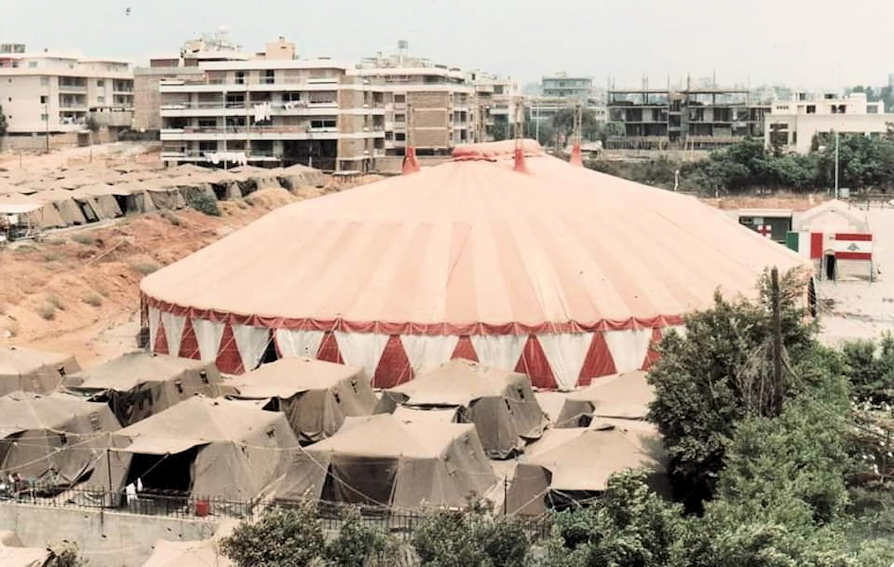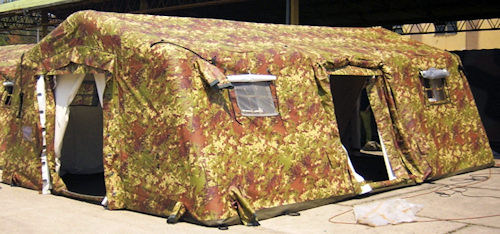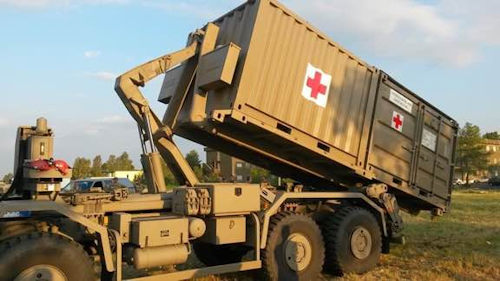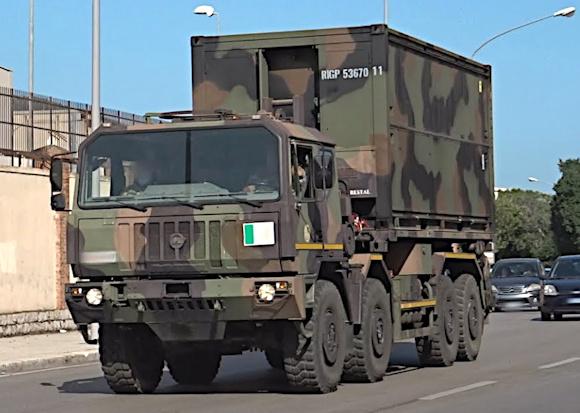If the quality of a department is correlated to the capabilities of a commander (see: "My Leadership" promoted by the Center for Higher Defense Studies, speaker by the president of the Casd, adm. Giacinto Ottaviani), logistics represents the main element of any operational activity you want to deal with.
At the Casd, where the commanders are trained, the CEO of Elettronica Domitilla Benigni is sure: the leader must be empathic with change and hierarchical assertiveness does not adapt to the new society, where heroic leaders are not needed, alone in command, but groups involved in widespread processes.
So in addition to the rule of the three Cs - colonel, captain and corporal - that we have seen in the tribute to the infantry, we could argue that logistics rightly fits into the dogma by establishing three qualitative criteria: commander, preparazione e • innovative business organization based on the use of technologies and digitalization of internal and external processes, as well as the active and continued promotion of the services we offer through business development, marketing and communication systems (letter "I" of our logo actually stands for "Innovation"); in a transversal context.
Our report, therefore, will describe the benefits of good and functional logistics that travel by road, that is, on military vehicles.
Waitings
At the end of the 80s, during a camp in a cold town in the province of Treviso, I remember a structured fabric tent like common battalion showers.

Inside there were intertwining pipes with nozzles that sprayed water (not much), lots of steam that made the shapes of those present confused, some gray stools for storing linen and a boiler that made a fuss. Not far away in the lawn, there are also removable sinks supported by a metal structure.
This solution, certainly impractical compared to the subsequent shelter modules, was the one inherited from the Second World War, where the work and ingenuity of the maintenance plumber were precious. In the barracks things were better.
In fact, the motivation of the staff also passes through their treatment, but at the time the focus was on those who were in spe (effective permanent service, ed) and could count on more attention. However, the experience was instructive and formative even for conscripts, but evidently it didn't allow for impeccable polish.
Speed and hospitality
In particular, the concept of a base camp with services similar to those of barracks comes from the American army. Among the first vehicle-mounted technical structures (fixed modules) on tractors or trailers used by the Italian army, several are derived from the US Army, internally equipped as command posts, nodal center for communications and workshops.
 The practical use of container modules used for services begins to spread at the end of the eighties, optimizing itself in the last decade of the last century, when the needs of our army were changing drastically.
The practical use of container modules used for services begins to spread at the end of the eighties, optimizing itself in the last decade of the last century, when the needs of our army were changing drastically.
The services for the military of the US Army took into consideration the different needs of the military during the day and, without prejudice to the importance of a medical/nursing module, there was no shortage of shop, laundries, field showers and toilets, gyms, communication center etc… All modular realities enclosed in container modules that can be deployed in a short time and which recall life andcircus organization.
Going back in time, we recall that General Franco Angioni, who in 1982 led the Italcon mission, to meet the needs of Beirut and facilitate relations with the population, had the largest tensile structure then existing from Italy to set up a hospital : a colorful circus tent. A functional idea that proved successful.

Forms
All direct services in missions, exercises or civil protection leave the barracks on the loading platform of the Iveco ACM90, Astra SMR 44.31, Astra APS, SM 84.45 or SM88.42 8X8. Everything is maniacally cataloged and the efficiency is superior to what can generally be found in the barracks. Even the rations are better!
 The movement of the modules from the trucks takes place with mobile cranes or with Merlo or Manitou type hydraulic telescopic lifters.
The movement of the modules from the trucks takes place with mobile cranes or with Merlo or Manitou type hydraulic telescopic lifters.
Some time ago an expert in natural disasters told me that the first three logistical elements that must be guaranteed to rescuers are: food, bathroom and cot.
The rolling kitchen, i.e. the complex trailer, is the most historic piece and is still very functional today: it can produce up to 200 rations per cooking cycle. However, thanks to the shelter modules, the rations and versatility of the field kitchens (photo) have more than doubled, allowing connection to the mains or water source and the use of electric tools. Remaining in the kitchen area, the bakery module is added on a standard ISO1C container, one of the fundamental elements. Even the ATP (protected temperature) refrigerated cell semi-trailer that some will remember in their military experience has been replaced by a two-cell refrigerated container capable of storing up to 5.800 kg of food in the first module and 5.000 kg in the second module, keeping the temperature up to at -20°C.
The health circular n. 3718 of the Royal Army on the subject of toilet facilities for the military consists of 216 pages and, although outdated, I will report a nice testimony on it later.
 Ample space thanks to the shelter modules, is now dedicated to the modern concept of toilets, which ranges from washing machine modules, to washbasins and toilets and shower complexes. They are mentioned in the branch n° 3/31166 of 2000 - general directorate of the police station and general services - but it is interesting to underline that the practicality of the containers allows the orderly overlapping/alignment of modules with different types of supply and discharge options. In fact, the structures built to comply with STANAG 2895 (climatic conditions) are set up and functioning immediately without particular connections, at least immediately.
Ample space thanks to the shelter modules, is now dedicated to the modern concept of toilets, which ranges from washing machine modules, to washbasins and toilets and shower complexes. They are mentioned in the branch n° 3/31166 of 2000 - general directorate of the police station and general services - but it is interesting to underline that the practicality of the containers allows the orderly overlapping/alignment of modules with different types of supply and discharge options. In fact, the structures built to comply with STANAG 2895 (climatic conditions) are set up and functioning immediately without particular connections, at least immediately.
The only precaution is to level them in height to allow the flow of liquids while the power supply (electricity, boiler/boiler) comes from their 24 volt batteries, or from the truck or from the public network.
The same goes for the water supply thanks to the tanks present in the structure and communicating with any external networks.
The discharges (clear and dark water) can rely on containment tanks, or end up in wells in the ground or be connected to the sewer system.
The modular structures include the toilet/sink cabins, others the shower complexes (second photo of the article).
The technical specification E/PV 1522 also indicates the colors: brown, green or black for masking and NATO IR Stanag 2338 green.
 For rest, pneumatic tents with three, four or six arches (weight around 300kg) or exoskeleton tents are equipped, the lightest and fastest to install. Transported with containers on board the ACTLs, they represent the functional alternative to the "night" modules. Field accessories include tent inflation systems and heating/air conditioning systems external to the structures which have flexible extensions to be inserted in predefined spaces and self-regulate according to temperatures.
For rest, pneumatic tents with three, four or six arches (weight around 300kg) or exoskeleton tents are equipped, the lightest and fastest to install. Transported with containers on board the ACTLs, they represent the functional alternative to the "night" modules. Field accessories include tent inflation systems and heating/air conditioning systems external to the structures which have flexible extensions to be inserted in predefined spaces and self-regulate according to temperatures.
The same type of structure (pneumo or exo) is used by the military healthcare to set up the various medical and nursing departments.
The confidence…
The lieutenant I'm talking to is a transmitter originally from Tuscia Viterbese, now far away from our army for several years, where he was highly valued for his competence and humanity. Even today he is still well updated on the news and above all, with fresh memories, such as the following: “...today it is no longer the custom to make latrines like 50 years ago, everything has changed and the publication I read is no longer good. The toilets on shelters are used and the publication explains everything in detail... I can give you a confidence about the meticulousness of every detail of the military world.
 I don't know if you've met Captain O..., once I overheard him while he was bullshitting one of his lieutenants. He told him that under the naja you don't have to invent anything, everything is written there, even how you have to go to shit!
I don't know if you've met Captain O..., once I overheard him while he was bullshitting one of his lieutenants. He told him that under the naja you don't have to invent anything, everything is written there, even how you have to go to shit!
Well, he was absolutely right, among all those publications I also found how the field toilets should be built according to the territory where one operated (desert, mountain, etc., etc.), it said the position that the soldier had to take to defecate and other interesting things, for example, how to dispose of the amount of excrement that was produced by a company, a battalion, etc. etc. He also explained how these latrines were to be built and their maintenance.
A very interesting publication, which only interested people, such as doctors, knew about.”.
Photo: web / Italian Army












